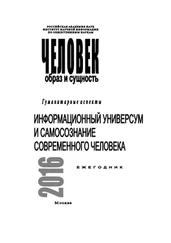5. C. Guilleminault and S. Sullivan. 2014. Towards restoration of continuous nasal breathing as the ultimate treatment goal in pediatric obstructive sleep apnea. Enliven: Pediatr Neonatol Biol 1: 001.
6. E. Glatz-Noll and R. Berg. 1991. Oral dysfunction in children with Down’s syndrome: An evaluation of treatment effects by means of video-registration. Eur. J. Orthod. 13: 446–451; and S. Linder-Aronson. 1970. Adenoids: Their effect on mode of breathing and nasal airflow and their relationship to characteristics of the facial skeleton and the dentition. Acta Otolaryngol. Suppl. 265: 1–132; and J. R. C. Mew. 2004b. The postural basis of malocclusion: A philosophical overview. The American Journal of Orthodontics and Dento-facial Orthopedics 126: 729–738.
7. V. A. De Menezes, R. B. Leal, R. S. Pessoa, and R. M. E. S. Pontes. 2006. Prevalence and factors related to mouth breathing in school children at the Santo Amaro project – Recife, 2005. Brazilian Journal of Otorhinolaryngology 72: 394–398.
8. P. Vig, D. Sarver, D. Hall, and B. Warren. 1981. Quantitative evaluation of airflow in relation to facial morphology. Am J. Orthod 79: 272–273.
9. J. R. C. Mew. 2004. The postural basis of malocclusion: A philosophical overview. The American Journal of Orthodontics and Dentofacial Orthopedics 126: 729–738.
10. J. R. Harkema, S. A. Carey, and J. G. Wagner. 2006. The nose revisited: A brief review of the comparative structure, function, and toxicologic pathology of the nasal epithelium. Toxicologic Pathology 34: 252–269.
11. A. L. C. Foresi, D. Olivieri, and G. Cremona. 2007. Alveolar-derived exhaled nitric oxide is reduced in obstructive sleep apnea syndrome. Chest 132; and J. O. N. Lundberg and A. Weitzberg. 1999. Nitric oxide in man. Thorax 54: 947–952.
12. M. J. Griffiths and T. W. Evans. 2005. Inhaled nitric oxide therapy in adults. New England Journal of Medicine 353: 2683–2695.
13. T. Aznar, A. Galán, I. Marin, and A. Domínguez. 2006. Dental arch diameters and relationships to oral habits. The Angle Orthodontist 76: 441–445; and R. A. Settipane. 1999. Complications of allergic rhinitis. Allergy and Asthma Proceedings: 209–213.
14. V. A. De Menezes, L. B. Leal, R. S. Pessoa, and R. M. E. S. Pontes. 2006. Prevalence and factors related to mouth breathing in school children at the Santo Amaro project – Recife, 2005. Brazilian Journal of Otorhinolaryngology 72: 394–398.
15. Colin Fernandez. 2016. Sleeping with your mouth open damages teeth «as much as a fuzzy drink before bed»: Dry mouth causes acid levels to rise, eroding teeth. Daily Mail, 5 февраля. Просмотрено 30 ноября 2017 по ссылке: http://dailym.ai/21wgZw7.
16. E. S. Frenkel and K. Ribbeck. 2015. Salivary mucins protect surfaces from colonization by cariogenic bacteria. Applied and Environmental Microbiology 81(1): 332–338.
17. P. McKeown. 2011. Close your mouth: Self-help Buteyko manual. Amazon Digital Services.
18. Март 2016, стр. 8; см. также: www.statisticbrain.com/sleeping-disorder-statistics/.
19. 28 мая – 3 июня 2016, стр. 5.
20. J. E. Remmers. 1990. Sleeping and breathing. Chest 97 (suppl): 77S-80S; J. E. Remmers, W. J. DeGroot, E. K. Sauerland, and A. M. Anch. 1978. Pathogenesis of upper airway occlusion during sleep. J. Appl. Physiol: Respirat. Environ. Exercise Physiol. 44: 931–938.
21. Слова доктора Билла Хэнга, процитированные на лекции по ориентированной на лицо ортодонтии. Лекцию прослушал С.К. в AAPMD (Американская ассоциация физиологической медицины и стоматологии), конференция в Окленде, CA, 2013.
22. R. Sapolsky. 1998. Why zebras don’t get ulcers: An updated guide to stress, stress-related diseases, and coping. W. H. Freeman & Co.
23. Личная беседа, 11 декабря 2015.
24. Mandy Oaklander. 2015. Lack of sleep dramatically raises your risk for getting sick. Time, 31 August. Просмотрено 28 октября 2017 по ссылке: http://ti.me/1JJa8F2.
25. R. M. Sapolsky. 2004. Why zebras don’t get ulcers, 3rd edition. Henry Holt and Company.
26. S. Loth, B. Petruson, G. Lindstedt, et al. 1998. Improved nasal breathing in snorers increases nocturnal growth hormone secretion and serum concentrations of insulin-like growth factor. Rhinology 36: 179–183.
27. D. Gozal, F. Hakim, and L. Kheirandish-Gozal. 2013. Chemoreceptors, baroreceptors, and autonomic deregulation in children with obstructive sleep apnea. Respiratory Physiology & Neurobiology 185: 177–185.
28. R. M. Sapolsky. 2004. Why zebras don’t get ulcers, 3rd edition. Henry Holt and Company.
29. G. Grassi, G. Seravalle, and F. Quarti-Trevano F. 2010. The «neuroadrenergic hypothesis» in hypertension: Current evidence. Experimental Physiology 95: 581–586.
30. Steven Reinberg. 2015. Sleep apnea devices lower blood Pressure. HealthDay. December 1. Просмотрено 28 октября 2017 по ссылке: http://bit.ly/263TfSj.
31. W. W. Schmidt-Nowara, D. B. Coultas, C. Wiggins, B. E. Skipper, and J. M. Samet. 1990. Snoring in a Hispanic-American population: Risk factors and association with hypertension and other morbidity. Archives of Internal Medicine 150: 597–601.
32. Snoring Statistics. Statistics related to snoring problems, SleepDisordersGuide.com. Просмотрено 28 октября 2017 по ссылке: http://bit.ly/1tBY7Nm.
33. J. Stradling and J. Crosby. 1991. Predictors and prevalence of obstructive sleep apnoea and snoring in 1001 middle aged men. Thorax 46: 85–90.
34. Там же.
35. W. W. Schmidt-Nowara, D. B. Coultas, C. Wiggins, B. E. Skipper, and J. M. Samet. 1990. Snoring in a Hispanic-American population: Risk factors and association with hypertension and other morbidity. Archives of Internal Medicine 150: 597–601.
36. D. Gozal. 1998. Sleep-disordered breathing and school performance in children. Pediatrics 102: 616.
37. P. Counter and J. A. Wilson. 2004. The management of simple snoring. Sleep Medicine Reviews 8: 433–441.
38. M. Kohler, K. Lushington, R. Couper, J. Martin, C. van den Heuvel, Y. Pamula, and D. Kennedy. 2008a. Obesity and risk of sleep related upper airway obstruction in caucasian children. J Clin Sleep Med 4: 129–136.
39. C. M. Hill, A. M. Hogan, N. Onugha, D. Harrison, S. Cooper, V. J. McGrigor, A. Datta, and F. J. Kirkham. 2006. Increased cerebral blood flow velocity in children with mild sleep-disordered breathing: A possible association with abnormal neuropsychological function. Pediatrics 118.
40. D. Gozal. 1998. Sleep-disordered breathing and school performance in children. Pediatrics 102: 616.
41. M. E. Barnes, E. A. Huss, K. N. Garrod, E. Van Raay, E. Dayyat, D. Gozal, and D. L. Molfese. 2009b. Impairments in attention in occasionally snoring children: An event-related potential study. Developmental Neuropsychology 34: 629–649; A. P. F. Key, D. L. Molfese, L. O’Brien, and D. Gozal. 2009. Sleep-disordered breathing affects auditory processing in 5–7-year-old children: Evidence from brain recordings. Developmental Neuropsychology 34(5): 615–628; L. M. O’Brien, C. B. Mervis, C. R. Holbrook, J. L. Bruner, C. J. Klaus, J. Rutherford, T. J. Raffield, and D. Gozal. 2004. Neurobehavioral implications of habitual snoring in children. Pediatrics 114: 44–49.
42. S. Miano, M. Paolino, R. Peraita-Adrados, M. Montesano, S. Barberi, and M. Villa. 2009. Prevalence of eeg paroxysmal activity in a population of children with obstructive sleep apnea syndrome. Sleep 32: 522–529.
43. C. M. Hill, A. M. Hogan, N. Onugha, D. Harrison, S. Cooper, V. J. McGrigor, A. Datta, and F. J. Kirkham. 2006. Increased cerebral blood flow velocity in children with mild sleep-disordered breathing: A possible association with abnormal neuropsychological function. Pediatrics 118.
Читать дальше
Конец ознакомительного отрывка
Купить книгу












